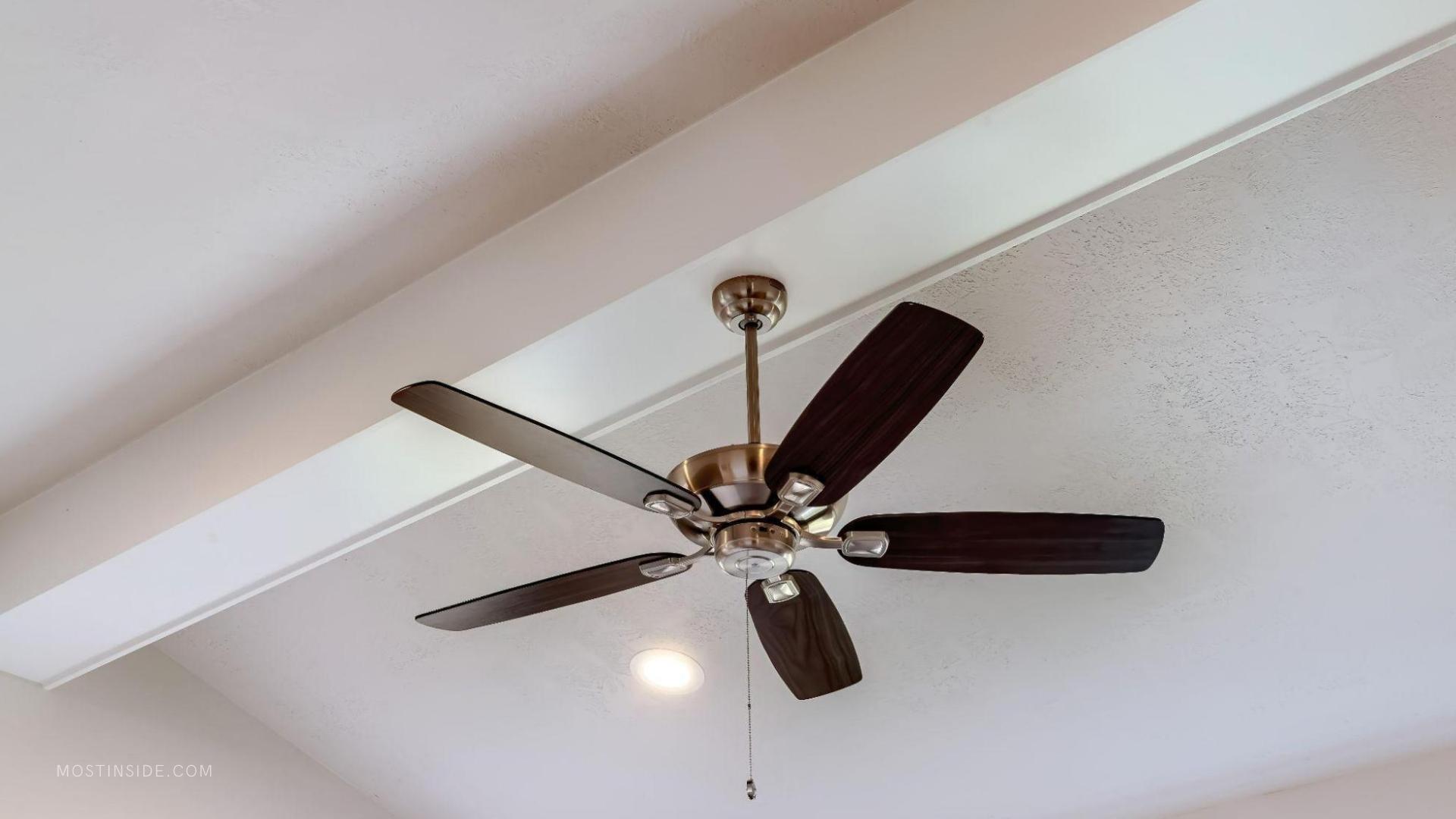Five Elegant Features For Your Next Ceiling Fan

Adding a ceiling fan to your home is a great way to help improve the airflow of your house while giving the interior design a little bit of extra pep. Selecting a fan doesn’t have to be difficult, but there are a lot of different amazing options available out there today. Long gone are the days of the simple ceiling fan. Today’s ceiling fan aficionados prefer something a bit more elegant and supplemental to the room. So what kind of features do you want in a ceiling fan? Here are a few ideas to get you started.
#1. Rustic Features
Rustic ceiling fans are what many of us probably picture in our minds when talking about ceiling fans. Characterized by a rustic, wooden appearance and invoking a lodge (or cabin)-like quality, these fans are becoming increasingly popular. The word “rustic” merely refers to something relating to the countryside or offering a more natural feel. They work great for matching hardwood floors or non-carpeted areas. Wooden blades, dark finishes, and just abstractly pleasant aesthetics mean these fans can look good in many different types of environments. Some rustic fans are damp rated for outdoor use, meaning they can stand up to some moisture but not excessive rain, ice, or snow. This makes them ideal for patios, garages, restaurants, and similar establishments outside the home. Inside the home, they offer a tasteful look and usefulness underscored by the variety of features (lights, remote control, etc.) one can pair up with them. There’s also some options for mounting these fans, with either a close installation, angled, or even via downrod. Downrods come in many shapes and sizes, though, so be absolutely certain to measure your room and ceiling height to find the optimal size for your downrod mount.
#2. Modern Features
A modern fan features many of the same blade and mount styles as a rustic fan. They’re also sleek and work well in most environments. Modern design is usually characterized by its use of modern materials, neutral color, and a much cleaner overall design. The bottom line: you won’t find rustic, wooden tones, or incredibly bright colors here. Instead, except smooth lines, possibly recycled materials, and more dull, earthy tones. But just because something features more neutral color schemes doesn’t mean it’s bad. A dull, earthy tone can be easy on the eyes and appear elegant amid the backdrop of your home’s other décor. Modern ceiling fans are the epitome of simple, clean design and fantastic performance. Operationally speaking, modern ceiling fans can have lights, several blades, and many other accessories.
#3. Low Profile
Sometimes a room may not be large enough to accommodate a fan that’s mounted to the ceiling with a downrod. If you’re considering a low-profile ceiling fan, consider getting a three-bladed model for optimal efficiency. When installing it, you’ll need to ensure you’re not putting it in a room with a ceiling that’s too high (over eight feet) or too low. Typically—at least according to the national electrical code—they should only be installed in rooms where the ceiling is lower than seven feet. The NEC also discusses how much a ceiling fan should weigh the approximate weight of its outlet box, so be sure to understand how your ceiling fan might impact your room from a safety perspective in addition to the aesthetic. Hugger ceiling fans do offer easier, faster installation and they can look amazing on a non-sloped ceiling. Adding some additional lighting or choosing one of many unique styles (you can get rustic, modern, tropical, transitional, nautical, farmhouse, and many other fan styles as hugger fans) means a low-profile ceiling fan isn’t just functional, it’s also incredibly versatile and multifaceted in any room.
#4. Lights
Lights are a fantastic feature for a ceiling fan. They keep your room bright, add some additional lighting to the room, and tie a room together well. Best of all, you can get any ceiling fan style and get lights added as an accessory. So if you’re looking for a high-quality ceiling fan with lights, you should be able to find one in any style that suits your personality. Whether it’s got three, four, or five blades, hangs from a downrod, or hugs the ceiling, you’ll be glad you went with the lighting option. There are also many unique bulb types, including LEDs, Edison-style bulbs, and chandeliers. Of course, you can also keep it simple with a single light or a few recessed lights. The choice is yours.
#5. Remote Control

It’s hard to believe sometimes, but remote controls haven’t always been available for ceiling fans. Rather than turning on and adjusting fan speed manually or via a wall switch, why not choose the convenience of a remote control? The most obvious reason to use a remote control is convenience. But there are other reasons, too. Instead of a pull chain dangling down from the fan, you can use the remote or a wall switch to make it easier to operate. Many remote controls also work with multiple fans, making them sort of universal. They may also come with a remote-control holder that lets you safely store the remote when not in use (how many of us have lost or misplaced a remote?). They also work with radio frequency modulation (RF) or infrared technology (IR), so you don’t have to worry about losing an internet or wi-fi connection and rendering your remote control useless. Ultimately, a remote is a great investment and will greatly enhance your ceiling fan experience.
Recommended For You
Database Automation: An Overview of IT Managed Service Providers
Most Inside
Most Inside offers high-quality recommendations and valuable updates to enhance all aspects of your life, providing premium guidance and enriching experiences.




